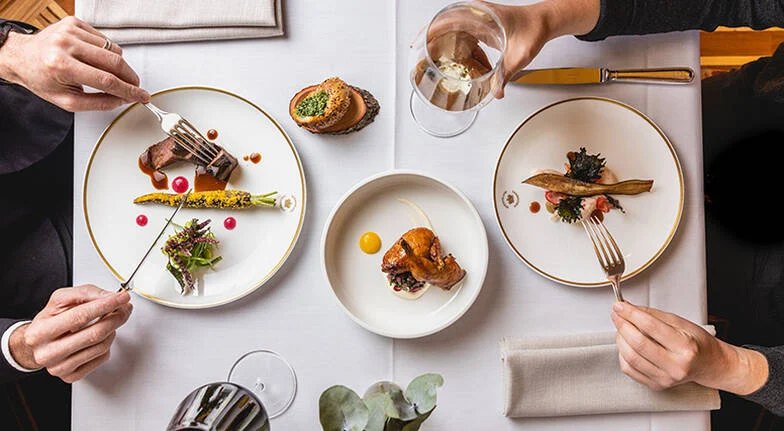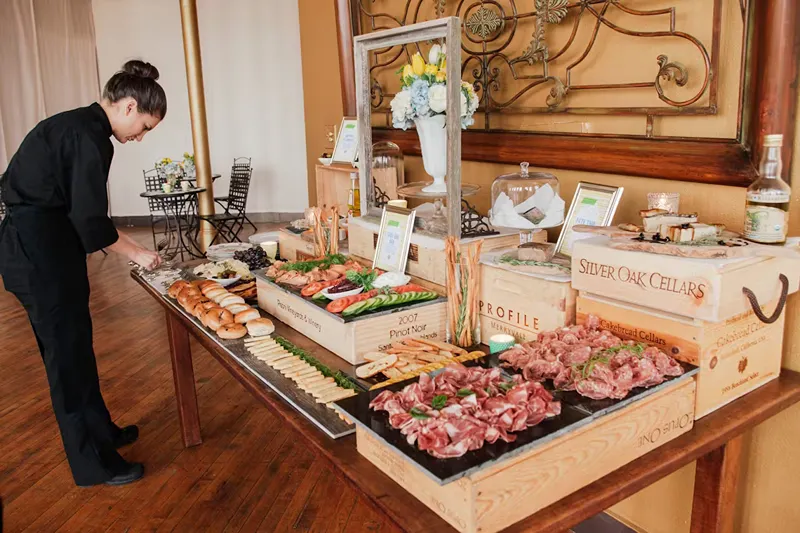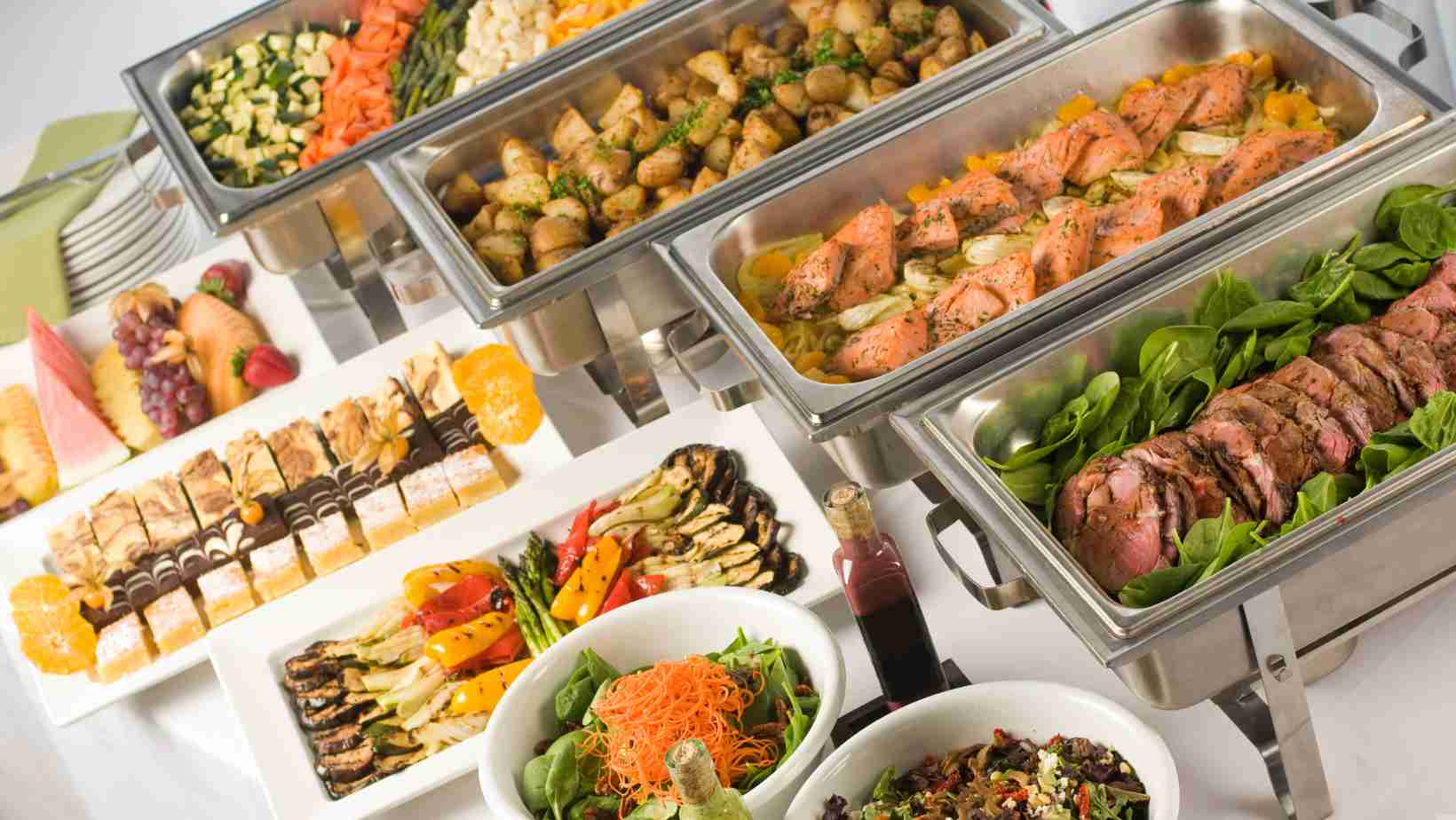How to Create a Tasting Menu at Home: A Complete Guide
Planning Your Tasting Menu at Home
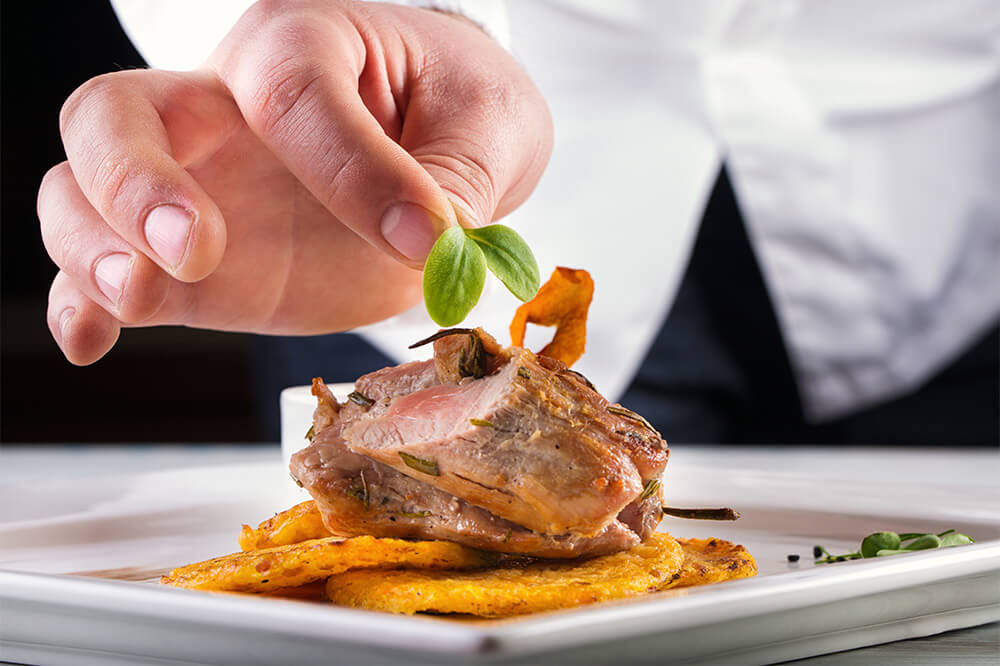
Planning your tasting menu at home can be a fun and creative process. It allows you to demonstrate your culinary skills and treat your guests to a special dining experience.
By carefully choosing your dishes and organising your courses, you can create a memorable meal that everyone will enjoy.
Let’s explore how to plan the perfect tasting menu together!
Choose Your Theme
Choosing a theme or type of cuisine for your at-home tasting menu is an important step that shapes the whole dining experience. A clear theme helps decide the flavours, ingredients, and overall mood of the meal. Different cuisines have their own unique flavours.
For example, Mediterranean cuisine uses fresh ingredients and strong flavours, with herbs like basil and oregano, along with olive oil and citrus fruits. On the other hand, Asian fusion mixes sweet, sour, spicy, and savoury tastes from different cultures. Having a theme lets each course connect with the next one, creating a fun culinary journey.
The theme you pick also affects how much you spend. Some cuisines need special ingredients, like high-quality seafood for Mediterranean dishes or fresh sushi-grade fish for Asian meals, which can be expensive.
However, choosing themes that focus on seasonal vegetables can help keep costs down while still providing a tasty menu. A clear theme improves the dining experience, making it easier for guests to enjoy how the courses relate to each other. It can also help you decide on decorations, music, and table settings, making the whole event more enjoyable.
Decide The Number of Courses
Tasting menus usually have 3-4 small courses. The goal is to keep your guests interested without overwhelming them. For an at-home tasting menu, you could start with a light appetiser like a fresh salad, followed by a small pasta dish, then a meat course, and finish with a dessert. For example, A good mix might include:
1. Appetisers
Appetisers are the perfect way to start your tasting menu. They are small dishes that give your guests a taste of what’s to come. You could consider having a Deconstructed Caprese Salad, which is a modern twist on the classic Italian dish, or go for something more unique like Spanakopita with Herbed Feta Foam. Spanakopita are small, flaky pastries filled with spinach, feta cheese, and herbs. A chilled Avocado Soup with Spiced Prawn could also be a great appetiser alternative if you’re looking for a more flavourful dish to include in your tasting menu to make at home.
2. Mains
Mains are the heart of your tasting menu, offering your guests a satisfying and flavourful experience. These dishes are usually a bit larger than appetisers and highlight the main ingredients. You could try Seared Salmon with Miso Glaze and Pickled Cucumber, which combines crispy salmon with tangy pickles, or Grilled Miso-Glazed Eggplant topped with crispy shallots for a smoky, vegan option. Another option is Chicken Roulade with Herb Jus, where juicy chicken is filled and rolled, then served with a rich herb sauce. These mains are perfect for creating a balanced and easy at-home tasting menu.
3. Desserts
Desserts are the perfect way to end your tasting menu on a sweet note. They provide a delightful finish and leave your guests with a smile. You could go for a rich and airy Chocolate Mousse with Espresso Cream, which combines dark chocolate with a smooth coffee-flavoured topping, or a light and refreshing Vegan Coconut Chia Pudding with Mango Coulis, perfect for a vegan-tasting menu at home. Another great choice is a Mini Fruit Tart with Pastry Cream, featuring a flaky crust, creamy filling, and fresh fruit toppings. These desserts will leave your guests with a sweet and satisfying end to their meal.
Choosing Ingredients
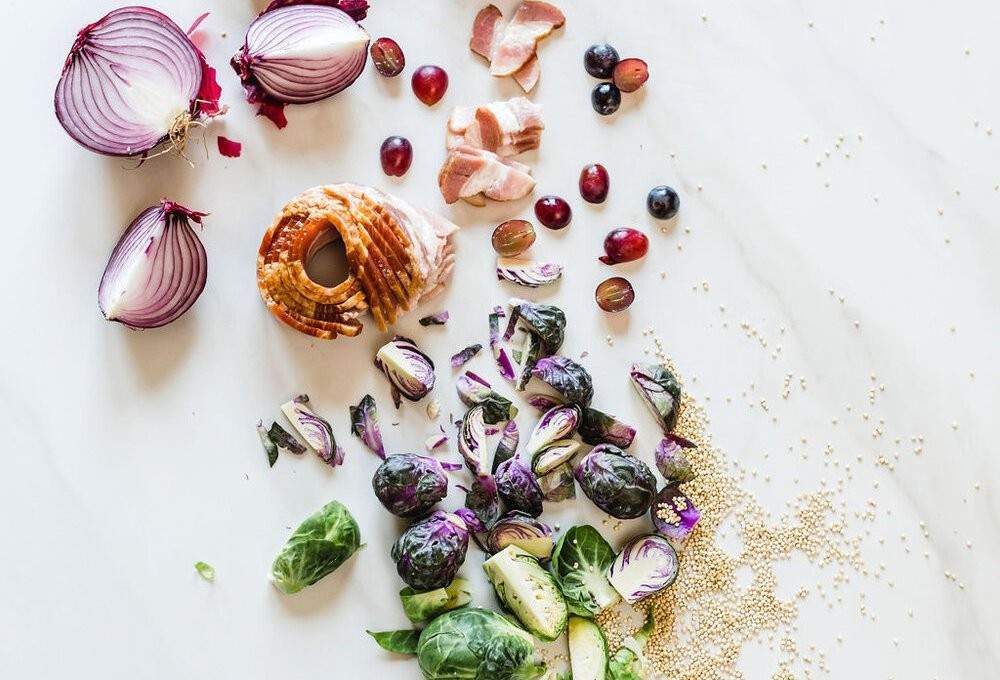
Fresh and seasonal ingredients make a big difference in your tasting menu. Try to plan your dishes around what’s in season. For example, if you’re hosting in the summer, you might want to use fresh tomatoes, basil, and peaches. In the winter, root vegetables like carrots and parsnips can add warmth to your menu.
Using local produce not only enhances the taste of your meals but also supports local farmers in your community. Visiting your nearest farmer’s market allows you to find a variety of fresh vegetables, fruits, meats, and cheeses. By choosing local ingredients, you give your menu a unique touch, ensuring you’re working with high-quality produce that reflects the best of the season. This approach not only benefits your dishes but also connects your dining experience to the local landscape.
Consider Portion Sizes
Portion sizes for tasting menus are much smaller than regular meals. Each course should be just a few bites, allowing your guests to sample different dishes without filling up too quickly. Whether you’re creating a 5-course or a 6-course tasting menu at home, it’s important to keep each course light and manageable. This way, your guests can enjoy all the courses and appreciate the variety of flavours without feeling too full. A well-planned tasting menu makes for a fun and memorable dining experience!
Pairing Wines or Beverages
Another element that can elevate your tasting menu is pairing wines or beverages with each course. This can make the whole experience even better! You don’t need to be a wine expert to do it.
Here are some simple tips for choosing the right drinks for your courses.
- Meat Dishes: If you have rich meat dishes like steak or lamb, try pairing them with a strong red wine, such as Cabernet Sauvignon or Merlot.
- Seafood: For lighter dishes like fish or shrimp, light white wines are a great choice. Wines like Sauvignon Blanc or Chardonnay pairs well with seafood because they enhance the flavours without overpowering them.
- Vegetarian Dishes: Think about offering a crisp white wine like Pinot Grigio or a light red wine like Pinot Noir with vegetable meals. These two choices can enhance the vibrant flavours of vegetables.
- Desserts: When it comes to dessert, sweet wines can be a lovely pairing. For example, a nice dessert wine like Moscato or a rich port can match the sweetness of your dessert perfectly.
- Non-Alcoholic Options: If you prefer non-alcoholic drinks, think about serving flavoured sparkling water or fun mocktails. You can create drinks that match the theme of your meal, like a fruity mocktail with a tropical dish.
Mixing Savoury, Sweet, and Refreshing Elements
It’s important to include a mix of flavours in your courses. This means combining savoury, sweet, and refreshing elements throughout the meal.
Starting with a savoury course can help set the stage for your tasting menu. Savoury dishes usually have rich, hearty flavours that make your taste buds excited.
Next, you can include a refreshing course. This could be a light and crisp dish that cleanses the palate. Refreshing flavours, like those found in salads or chilled dishes, help balance the meal and make it feel lighter.
Whether you're hosting a special celebration dinner, looking for a chef during your holiday or weekly meal prep, we will match you to the perfect chefs.
Start hereFinally, finishing with a sweet course brings everything together. Sweet dishes can be a great way to end your meal on a high note, leaving a satisfying taste.
By mixing these different flavours, you create a balanced tasting menu that keeps everyone interested and engaged. Each course flows into the next, creating a delightful experience that showcases a variety of tastes and textures.
Tips and Tricks
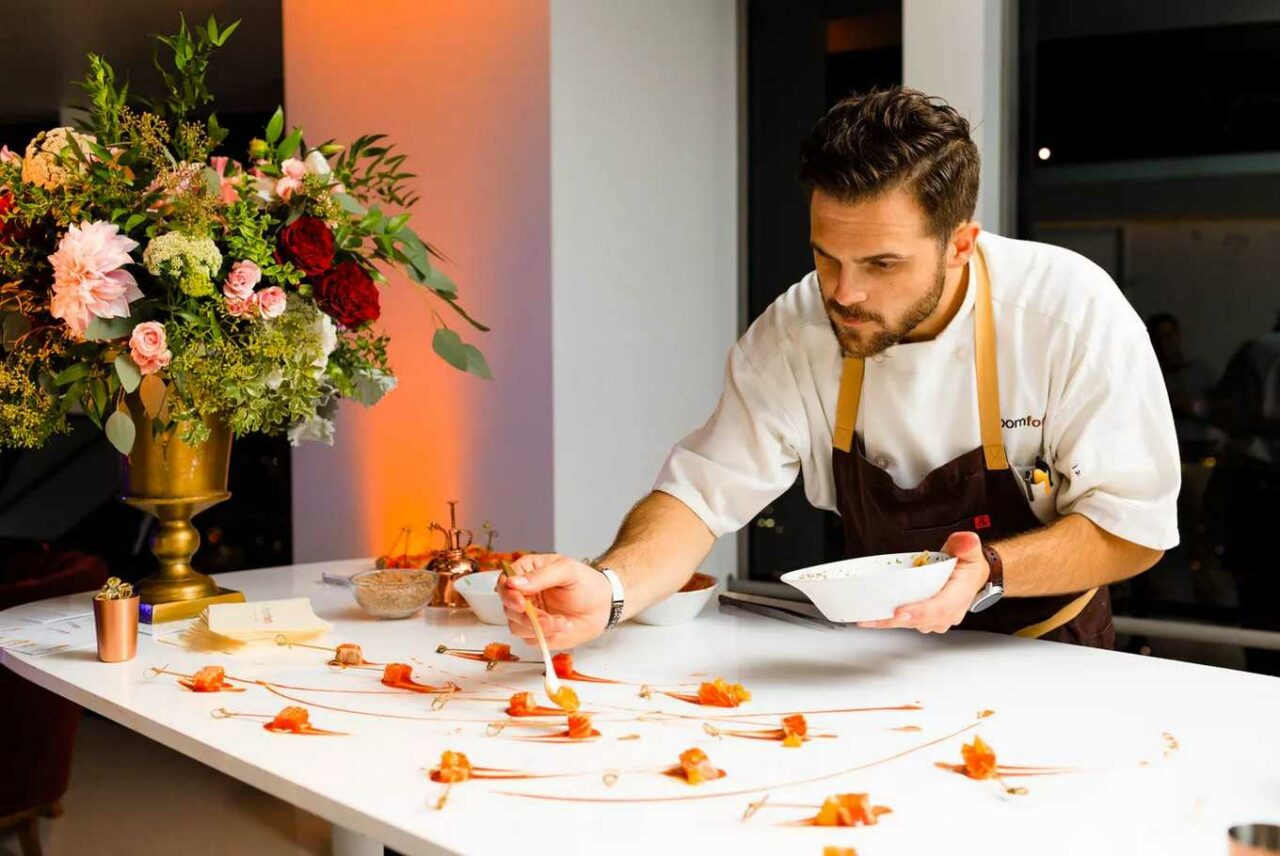
Preparing for a tasting menu at home can be a fun and rewarding experience, but it does require some planning and organisation. Here are some helpful tips and tricks to ensure everything runs smoothly:
- Time management: Plan ahead to manage your time well. Write down a timeline for when to prepare each dish. For example, you could start by making desserts early in the day and then prepare appetisers right before guests arrive.
- Kitchen organisation: Keep your kitchen organised, set up all your ingredients before you start cooking, and make sure you have all the tools you need within reach. If you have space, you can even label areas of the kitchen for different courses. For example, keep the ingredients for your appetiser in one spot and your dessert ingredients in another so you’re not scrambling for items while cooking.
- Customise for Dietary Restrictions: When planning your tasting menu at home recipes, it’s important to know if your guests have any dietary restrictions, like allergies or preferences. You can easily adjust your menu by swapping ingredients. For example, if one guest is vegetarian, you can replace a meat course with a mushroom-based dish. This makes your tasting menu inclusive and enjoyable for everyone.
- Presentation: Plating is an important part of any tasting menu. Since portions are small, presentation matters more. Use small plates or bowls and arrange the food carefully to make it look beautiful. For example, you can drizzle sauces around the plate or add small garnishes like herbs or edible flowers to make the dish stand out. Remember, we eat with our eyes first!
- Storytelling: Serving your tasting menu can be just as important as preparing it. Consider how you will present each dish. You could announce each course to your guests, explaining what they are about to eat and what makes it special. This adds a personal touch and makes the experience more engaging. If possible, serve the dishes yourself rather than having everyone serve themselves.
- Practise Before Hosting: Testing your dishes ahead of time is a good idea. You don’t want to try a complicated recipe for the first time on the day of your event. Practise your menu a week before so you know what works and what doesn’t. This also gives you a chance to stay organised and refine your timing.
Elevate Your Dining Experience with a Tasting Menu at Home
Creating a tasting menu at home is a wonderful way to make your meals special and exciting. You can explore new flavours and impress your friends and family with your culinary skills. With a little planning, you can create a beautiful and delicious dining experience right in your own kitchen.
If you want to take your tasting menu to the next level, consider working with Yhangry. Their talented chefs can help you design a unique tasting menu that suits your taste. Plus, Yhangry handles all the preparation and cooking, so you can relax and enjoy your time with friends and family without the stress of cooking. You can enjoy the fun of a restaurant-style meal without leaving your home. So gather your ingredients, invite some friends, and get ready to enjoy a memorable tasting menu at home!
- Can I make a tasting menu if I’m not an experienced cook?
-
Absolutely! A tasting menu at home can be simple or elaborate. Start with dishes you’re comfortable making and gradually challenge yourself with new recipes. You can also focus on straightforward recipes using high-quality ingredients. Here are some tasting menu ideas at home for dinner that will impress your guests!
- Where can I find inspiration for tasting menu ideas at home?
-
You can find inspiration for your tasting menu to cook at home in various places. Cookbooks and food blogs offer a wealth of recipes and tips to help you create tasty dishes. Cooking shows can also spark ideas and techniques you might want to try. Furthermore, social media sites like Pinterest and Instagram are great for finding fresh recipes and plating concepts that will improve the experience of your tasting menu.
- How can I make hosting a tasting menu dinner easier?
-
Hosting a tasting menu can be time-consuming, but services like Yhangry make it easy! They connect you with skilled chefs who can prepare a stunning tasting menu right in your home. This way, you can enjoy a gourmet experience without the stress of cooking.
